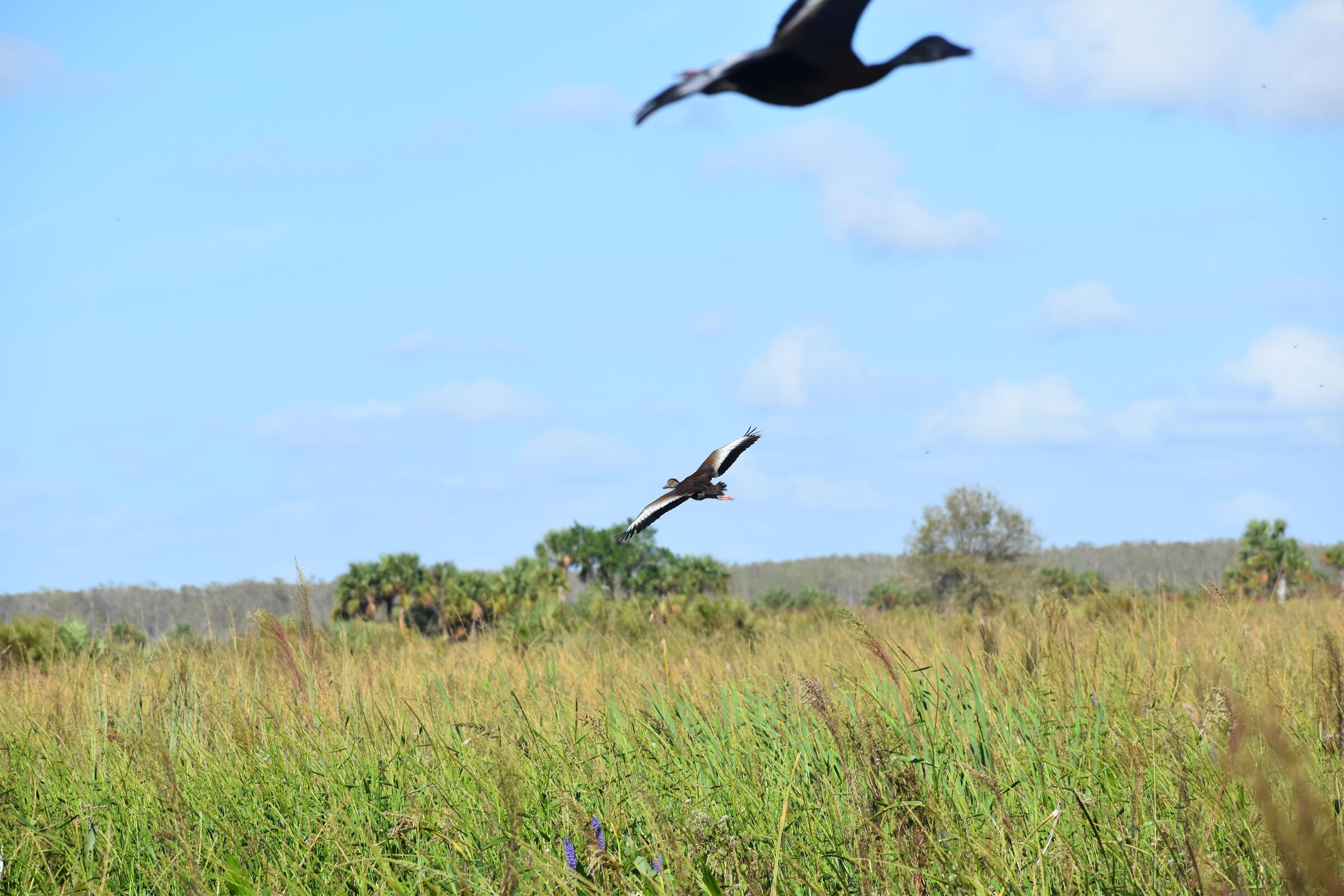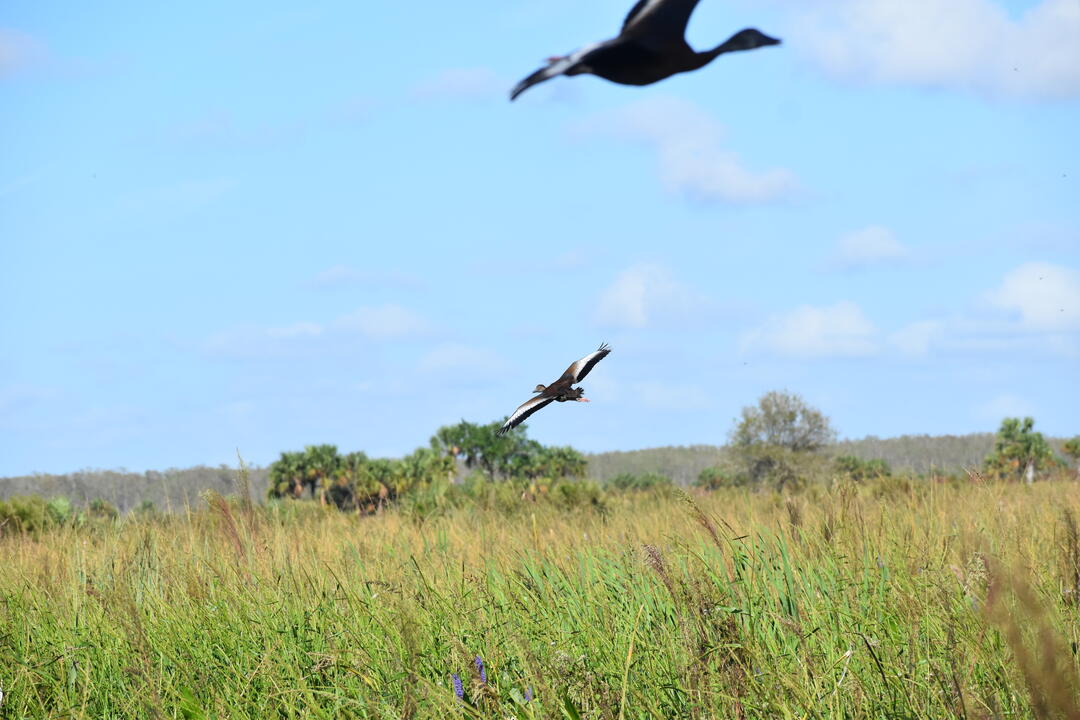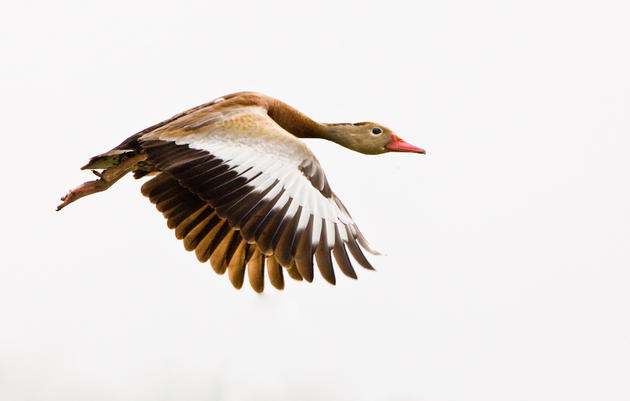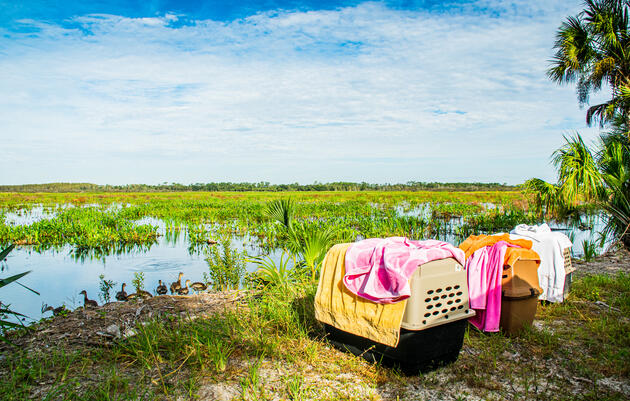This weekend Corkscrew Swamp Sanctuary welcomed nine new residents: Black-bellied Whistling Ducklings! The ducklings had been rescued from a parking area near the Fort Myers airport in late September and taken to the Center for Rehabilitation of Wildlife (CROW) on Sanibel Island. Shortly thereafter, as Hurricane Ian approached, they were evacuated to the Conservancy of Southwest Florida’s von Arx Wildlife Hospital in Naples.
According to Joanna Fitzgerald, the hospital’s director, the ducklings spent ten days in the bird room at the hospital before being moved to an outdoor flight recovery enclosure. After three weeks of gaining flight strength and becoming re-acclimating to the outdoors, they were ready for release. The von Arx staff knew Black-bellied Whistling Ducks were commonly seen at Corkscrew Swamp Sanctuary and that the Sanctuary could provide ample safe habitat for them.
Black-bellied Whistling Ducks are named for the whistling sounds they make, and these youngsters were whistling amongst themselves as their crates were moved to the release site. While they were initially reluctant to depart the safety of their crates, as soon as the first one flew out, they all followed suit and began flying around the release site and exploring their new surroundings.
Audubon’s Corkscrew Swamp Sanctuary, a Ramsar Wetland of International Importance, has been an Audubon-protected site for more than 100 years and in recent decades, sightings of Black-bellied Whistling Ducks have been on the rise. Following the first sighting by boardwalk naturalists in 2007, whistling duck sightings have increased every year. According to recent data, Black-bellied Whistling Ducks are seen at the Sanctuary nearly half the days of the year, and nearly every day in late summer and fall.
The beautiful wetlands where the ducks were released are part of Corkscrew Swamp Sanctuary’s recent marsh and wet prairie restoration effort. The Sanctuary’s land management team has restored over 1,000 acres of marsh and prairie habitat in recent years, removing Carolina willow and other shrubs that take over and crowd wetlands when their hydrology is changed. With the shrubs removed, a patchwork of diverse native wetland plants is returning, creating prime waterbird habitat where the Black-bellied Whistling Ducks will be able to find food and take up a seasonal residence.
“We are grateful Corkscrew was willing to let us release the ducks at the Sanctuary, so they have the opportunity to meet up with other flocks of whistling ducks that are in the area,” said Fitzgerald.
This marks the second time that Fitzgerald selected the Sanctuary as the post-recovery release site for Black-bellied Whistling Ducks. The Audubon team appreciates the regional partnerships that allow us to maximize our conservation impact at Corkscrew Swamp Sanctuary and throughout the Western Everglades ecosystem.









